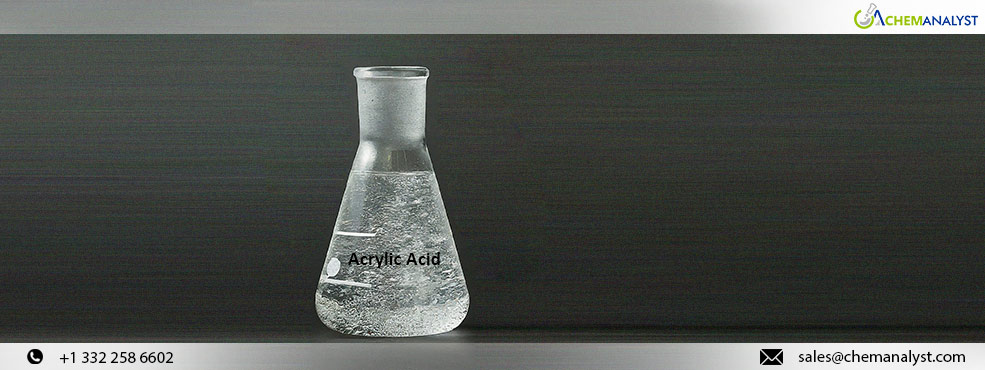Welcome To ChemAnalyst

Tokyo, Japan: During the week ending on March 15, 2024, the Acrylic Acid market in Southeast Asia is experiencing varying price trends for the commodity. In Malaysia, Acrylic Acid prices are maintaining their stability compared to the previous week, primarily due to a balance between supply and demand. However, in Japan, Acrylic Acid prices are witnessing a slight incline in their trend, attributed to disruptions in the product's supply chain. Despite the stability in the cost of the raw material, Propylene, from the previous week, thereby keeping production expenses for Acrylic Acid consistent.
In the Japanese market, the prices of Acrylic Acid are following a slight incline of 0.55% and settled at USD 905/MT (FOB-Tokyo) on 15th March 2024. The surge in prices of Acrylic Acid is attributed to a disruption in the balance between supply and demand, as existing inventories fell short of meeting the increased demand from downstream Paint and Coating sectors. To tackle this spike in demand for Acrylic Acid, production rates are being ramped up, leading to heightened trading activities both domestically among major manufacturing units and internationally. Despite these market dynamics, the price of the raw material, Propylene, remained steady compared to the previous week, thereby keeping the production cost of Acrylic Acid unchanged. The widening gap between Propylene and Acrylic Acid prices indicates a bullish sentiment in the market, signaling favorable conditions during this period.
Furthermore, Japan's central bank took a historic step by raising its benchmark interest rate for the first time in 17 years, marking the end of a prolonged period of negative rates aimed at stimulating the economy. At a policy meeting, the Bank of Japan increased its lending rate for overnight borrowing by banks to a range of 0 to 0.1%, up from the previous rate of minus 0.1%. This move was widely anticipated and signaled a departure from the ultra-loose monetary policy that had been in place for an extended period. For years, the Bank of Japan has maintained exceptionally low borrowing costs intending to stimulate spending and investment among Japanese consumers and businesses, thereby supporting sustained economic growth. Despite Japan's recent slip to the world's fourth-largest economy, trailing behind Germany in terms of nominal gross domestic product (GDP), efforts to bolster domestic consumption and investment remain a priority. The United States holds the position of the largest economy, followed by China, which surpassed Japan over a decade ago. Bank of Japan officials emphasize the importance of ensuring that any inflationary trends are driven by domestic factors capable of supporting higher wages, rather than relying on external factors. Analysts anticipate that the Bank of Japan will continue to proceed cautiously with any further adjustments to interest rates.
However, in the Malaysian market, the prices of Acrylic Acid are maintaining their stable price with the previous week due to the moderate demand from the downstream Paint and Coating sectors and an ample amount of inventory levels. Furthermore, the stable prices of the feedstock, Propylene, are maintaining the steady production cost for Acrylic Acid, therefore, contributing to the overall price trend of the commodity. To maintain a stable market situation for Acrylic Acid, the trading activities as well as the production cost for the product are kept steady so that the supply chain remains unhampered. Therefore, the equilibrium maintained between supply and demand for Acrylic Acid is playing its role in the stable price trend of the commodity.
According to ChemAnalyst, it is expected that the prices of Acrylic Acid will rise in the coming weeks. This anticipation is based on the projection of increased demand from the downstream Paint and Coating sector, leading to higher consumption rates of the commodity. Consequently, insufficient inventory levels are anticipated, which could further drive up the prices of Acrylic Acid.
We use cookies to deliver the best possible experience on our website. To learn more, visit our Privacy Policy. By continuing to use this site or by closing this box, you consent to our use of cookies. More info.
